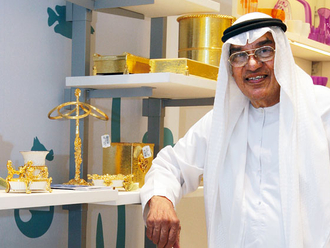“I joined the gang so I could have my own room, after a year of scrubbing the toilets.”
Lifting his convict’s T-shirt, 48-year-old Jimmy* shows off the emblem of his gang, “Sigue-sigue Sputnik”, tattooed on his back: it’s a flamboyant spaceship, named after some British cyberpunk band. As a reward for joining the gang, Jimmy now has his very own “kubol” (or “shelter” in Tagalog, the Philippine archipelago’s main language) next to the dorm he used to share with 800 other prisoners, in the Quezon City Jail in a northern suburb of Manila.
With more than 3,500 convicts, four times more than capacity allows, this is one of the most overpopulated prisons in the Philippines. Chief Inspector Roselyn Carta, who wears a mask on her face to protect herself from tuberculosis, is one of the rare women in this male-dominated world. She struggles to make her way through the crowd of inmates gathered outside, all seeking a bit of fresh air.
“In the evening, some [of them] sleep on the basketball court,” she says.
Some of the prisoners have less than two square metres to themselves, of a requisite 4.7 square metres.
“Prison overcrowding is a matter of humanitarian urgency in the Philippines,” says Vincent Ballon. He’s in charge of this thorny issue in the Philippine branch of the International Committee of the Red Cross (ICRC); visiting prisoners is among the Geneva-based organisation’s missions. Interviews with convicts take place without witnesses and are confidential.
“We demand repeated access to all prisoners,” Ballon explains.
In 2014, there were about 120,000 convicts among the archipelago’s 100 million citizens. In 2015, the figure increased to 140,000, or 140 for every 100,000 inhabitants, far behind the US, which has 716 per 100,000. With an occupation rate of 316 per cent, Philippine prisons are the most overcrowded in the whole of Asia, and the fifth most crowded in the world, according to the International Center for Prison Studies.
In a move to solve the problem while facilitating prisoner rehabilitation, inmates are being encouraged to participate in the most diverse activities: morality classes taught by religious organisations, repair or painting workshops supervised by prisoners themselves, depending on their abilities, choir and even dancing classes. A video shot in 2007 in which 1,500 inmates of the Cebu maximum security prison danced to Michael Jackson’s “Thriller” went viral and has been seen more than 56 million times, turning the penitentiary into a tourist attraction of the central Philippines.
Over more than a year, some 50 convicts have been released early thanks to an innovative day-credit system that rewards such rehabilitation efforts.
“In the Quezon City Jail, you earn three-and-a-half days if you study, two if you take a small job and one if you behave yourself. You can accumulate up to eight credits per week,” Carta explains.
But the policy’s impact on relapses is difficult to assess. So far, “good behaviour” credits have only been recorded on paper, and mistakes do happen. The ICRC has partially financed the purchase of computers to allow greater reliance on digital records, which are new.
“The worst part is that only 10 to 20 per cent of inmates are actually found guilty and sentenced for the crimes they’re accused of,” Ballon says.
Raymund Narag, 41, knows this all too well: for seven years, he rotted inside the Quezon City Jail for a crime he didn’t commit.
“I was only 20 when I was locked up. I didn’t know anything about life,” he says. A few days before his graduation ceremony, Narag, then a brilliant law student, was accused of the murder of a fellow student. He was later acquitted and released in 2002.
“The killers were wearing masks. I was very popular at university. Somebody eventually gave my name, probably out of jealousy,” he claims.
In spite of it all, Narag decided to put his years in jail to good use. While still a prisoner, he wrote a letter for an illiterate inmate who wanted to communicate with his family. Later, he became a scrivener, and more and more of his fellow inmates requested his help in preparing their defence statements. By the time Narag got out, he had already decided to dedicate the rest of his life to prisons, so he went to the US and completed a PhD in penitentiary administration, becoming an expert in prisons around the world.
“In the West, the focus is on total incarceration: prisoners must be constantly under surveillance. Developing countries can’t necessarily afford that, and opt instead for a self-management policy for the inmates, like in Latin America, or for joint management between the administration and the gangs, like in the Philippines. I think that the best model is the Scandinavian one. It’s an open, community-based system, but with major resources. My country only spends 50 pesos [about Dh4] per prisoner and per day. That’s barely enough for food,” Narag says.
The greatest irony of it all is that Narag now advises his own government on how to best reform the prison system. For now, this amounts to volunteer work; he’s still waiting for his wages.
“My wife is starting to complain because soon we’ll have run through all our savings,” he grumbles. Narag also works part-time as an assistant professor in an American university.
He often travels to New Bilibid (which means “prison” in Tagalog), in Muntinlupa, a southern district of Manila. With more than 23,000 inmates, it’s the Philippines’ most populated penitentiary by far, and stretches across more than 486 hectares. Known as the home of some of the worst criminals, the penitentiary took the radical step of co-managing the facility with 12 regional gangs due to a lack of financial resources.
We’re escorted through the prison by detainees paid in tips; they hold umbrellas to shield us from the sun.
“We act as the middlemen between the other convicts and the administration, which put us in charge of security,” explains Mike*. He received a life sentence for murder, and is the assistant commander of the Batang City Jail gang, represented by a laughing bunny tattoo. He tacitly acknowledges that those who fail to cooperate are sometimes victims of revenge attacks.
Sunday is family day at New Bilibid. The atmosphere inside the high security quarters is like that of a country fair. Outside of curfew times, prisoners are allowed to come and go as they please inside the compound. Trade is also allowed, with makeshift booths offering sweets and pirated DVDs. On the cafeteria’s shady terrace, some inmates are chatting with their wives, who came to spend the night; they’re keeping an eye on the dormitory for vacancies.
First introduced at the beginning of the 2000s, family day in particular is said to be responsible for the drop in the prison’s crime rate, which is relatively low for its population. In 2014, 22 inmates died at the prison, including two during a riot, two who were stabbed and a doctor who was shot dead outside the facility.
With the exception of those at the prison gates, the prison’s hundred or so guards are invisible. Drug lords’ cells look like star-rated short-term hotels, with air conditioning, Jacuzzis and even a studio in which one former hustler recorded a mushy ballad.
“That’s far from representative of most prisoners’ experience,” say the inmates who used to be on death row (capital punishment was outlawed in 2006).
They point above their heads to the shaky intermediate floor, cluttered with a succession of dusty mattresses. They built it themselves so they wouldn’t have to sleep on the floor anymore. But construction materials have since been banned.
Plans for another, bigger prison four hours away from the capital are already under way. Eventually, 27,000 criminals will be transferred there, making it one of the world’s largest penitentiaries ever.
–New York Times News Service
*All prisoners’ names have been changed.













